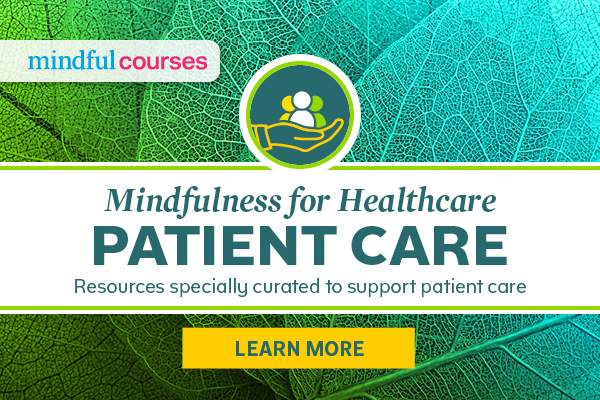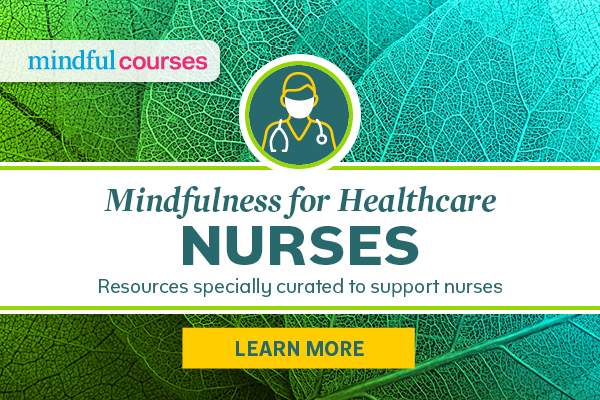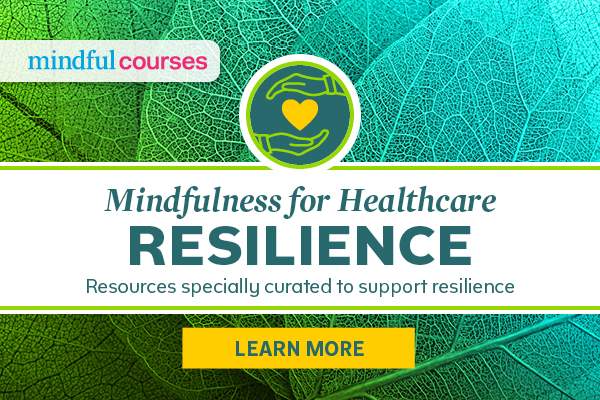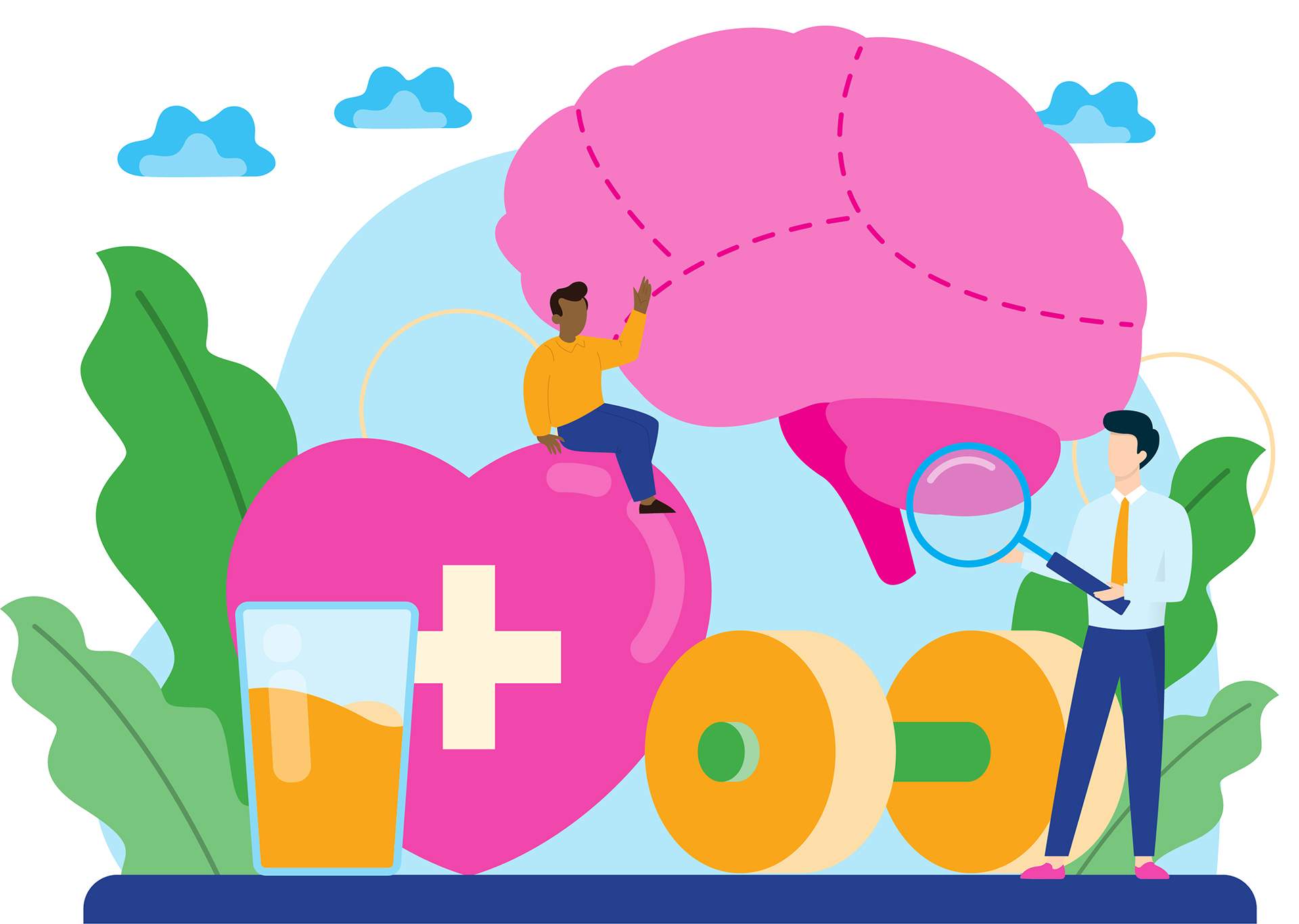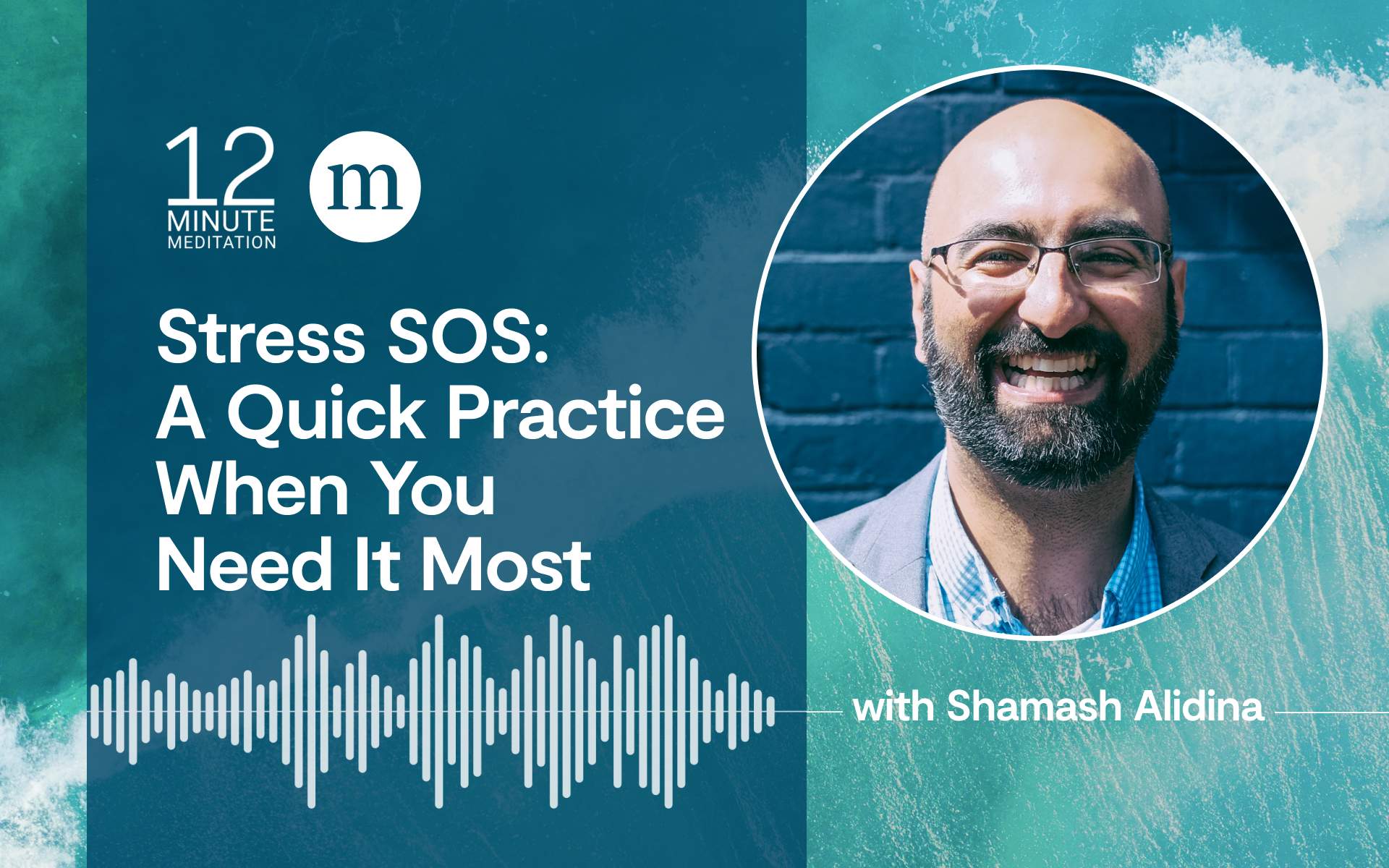
Mindful healthcare practices and perspectives are profoundly beneficial at all levels of healthcare—from the personal to the professional to the patients. With heartfelt appreciation for everything our home health aids, nurses, doctors, administrators, executives and other healthcare professionals have been through over this year, we offer these practical tools for well-being, communication, resilience, and thriving in order to create compassionate habits that can transform healthcare from the inside out.
These accessible and actionable mindfulness practices are not just a tactic to calm us down; they foster a way of being that becomes the foundation for building compassionate organizations. Please use these mindfulness practices for healthcare workers freely, and often.

Burnout in Healthcare
When we attempt to repress or compartmentalize how our work affects our lives—emotionally, mentally, physically, in our relationships—it can lead to increased stress, less productivity, heightened depression, anxiety, and may even lead to a greater risk of heart disease. It can also lead to burnout.
Baseline rates of burnout among physicians hovered around 50% even before the COVID-19 pandemic. Since COVID, rates have increased. Recent data shows that 60% of healthcare workers report that their mental health had suffered over the last year. And an astonishing 30% of physicians and residents and 54% of nurses report moderate to high levels of burnout.
While the word “burnout” has become ubiquitous in recent years, the ways burnout shows up are not always clear—until someone becomes so unwell that they’re forced to take time off or, tragically, stop working in health care altogether. Here’s how burnout can show up:
How to Recognize the Signs of Burnout
1) Emotional and physical exhaustion: People with burnout usually describe experiencing a complete lack of energy that manifests itself physically. Some are even diagnosed by their doctors with Chronic Fatigue Syndrome. Regardless, this troubled state results in a debilitating feeling of dread for what the day will bring, even on days when no major work or personal responsibilities loom. Basic tasks and, sadly, even things that would normally provide joy become chores. Surprisingly, though exhausted, people with burnout often have trouble sleeping to the point they develop chronic insomnia. This inability to rest and recharge makes it harder to concentrate and focus, which eventually shows up in physical forms, such as panic attacks, chest pain, trouble breathing, migraines, and stomach pains. These symptoms become so severe and disruptive that it becomes impossible to cope with the challenges (and even pleasures) of daily life.
2) Detachment and cynicism: Those suffering from burnout tend to become perpetual pessimists. They go well beyond seeing the glass as half empty. For them, the glass is totally empty and there’s zero reason to try and fill it. Feelings of worthlessness, hopelessness, and an inability to accept consolation from others or connect to the empathy offered by others is commonplace. They retreat into themselves and resist socializing. Eventually, fueled by a desire to shut everyone out, they move to a state of total isolation and justify their retreat with a cynical approach to life, family, friends, work, you name it. The feeling of hopelessness transitions into one of helplessness and creates a default response to every suggestion in the vein of “what’s the damn point anyway.”
3) Feelings of self-doubt and ineffectiveness, lack of accomplishment: Sometimes people experiencing burnout are still capable of going through the motions. They still make it to the office. They still get the job done. They still join the family for dinner and handle the household duties. However, they do it in an almost robotic manner. There is no zest, no pleasure, and, therefore, performance suffers. They find ordinary tasks take longer. They procrastinate and invent excuses as to why they’re less effective. They get frustrated at things that were once easy and now seem overwhelming. Sure, they’re physically present and functioning on some level. But emotionally and mentally, they’re a shell of their former selves and are keenly aware of their inadequacy. This, as you can imagine, only perpetuates those feelings of exhaustion and detachment.
A Mindful Response to Occupational Burnout
Chances are, if you work anywhere within health care (or even know someone who does), some of these issues are all too familiar. By cultivating an awareness of these warning signs of burnout, healthcare providers have a better chance to work with it and recover from it—both on an individual basis and, importantly, across the spectrum of their workplaces and of our wider healthcare system.
Among the many necessary solutions for the burnout crisis, including organizational and policy changes, the practice of mindfulness has countless applications and proven benefits.
For doctors and other providers, mindfulness practice eases symptoms of burnout, while improving engagement, sense of meaning, and the ability to navigate difficult conversations with patients and to feel empathy. The enhanced self-awareness and emotion regulation resulting from mindfulness practice also enhances teamwork, decision-making, and ultimately patient safety, outcomes, and cost. Finally, mindfulness improves emotional intelligence, sleep, and overall resilience.
The benefits of mindfulness practice also extend to healthcare leaders and executives experiencing burnout and lead to improved focus, executive presence, strategic awareness, emotional-intelligence-based leadership skills, and effective communication.

Take Time for Self-Care with the P.A.C.E. Yourself Practice
We are all safer because of the work of healthcare providers. With deep gratitude, Dr. Reena Kotecha invites those working on the frontlines to take a moment to prioritize self-care with these four mindful healthcare tips.
- Permission: While healthcare providers are consistently advocating that their patients take time out to prioritize their health and well-being, we aren’t so good at doing the same for ourselves. I invite you to consider what would granting yourself permission look, sound and feel like? Might you use a phrase to encourage some self-care, such as, “I offer myself this opportunity for well-being.” For perhaps you’ll physically move into a space which signals to your body and brain that it’s time to take some time for yourself—this may be the corner seat in your clinical room, a spare room in your home, or stepping out into the garden. Consciously granting yourself permission to care for yourself in this way sets an intention to do so.
- Awareness and Anchor: Next, bring your awareness to your present moment experience. Notice any areas of tension or tightness in the body. Many of you have been donning PPE on shift and this may have left some residual constriction in your body. Observe any physical sensations you have, along with your thoughts and thought patterns in the here and now. If any unpleasant emotions arise as you are doing this, I invite you to anchor in the breath, breathing fully and deeply as you stay with your experience.
- Compassion: Now that you are aware of your present physical and mental state, consider turning toward yourself with kindness. What might you do in this moment to offer yourself kindness, just as you would offer to a friend or colleague who has been working tirelessly as a healthcare professional navigating a pandemic. Might you soothe yourself with an embrace? If you like, place your hands on your heart and sense care streaming through your fingers. Might you offer yourself some words of kindness or encouragement as you are doing this?
- Envision: When you feel ready to, consider yourself stepping into the next moment and all future moments with a sense of well-being, seeing and feeling yourself having energy and vitality, stay with your exploration for as long as you can and notice if there are any shifts in your mental and/or physical state. Keep in mind that well-being is an ongoing exploration. We can always test and try moments of self-care. When you are ready to come out of the Envision stage, consider what you might carry forward from this P.A.C.E. practice into the rest of your day.
Mindful Healthcare Yoga: A Practice to Nourish and Heal
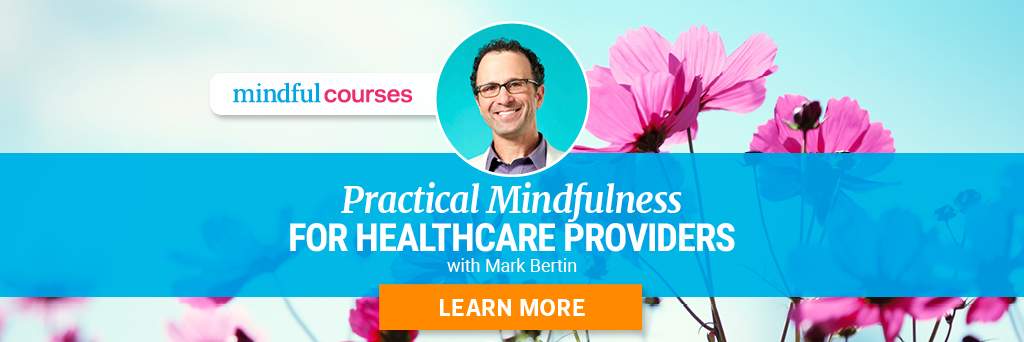

Mindfulness for Healthcare Workers During the COVID-19 Pandemic
There is no single practice that is going to change the fact that healthcare workers are living under immense pressure right now. The COVID-19 pandemic has taken a toll on our mental, physical, and emotional health. The intention of mindfulness is to help us develop the skills that will allow us to navigate through times just like this.
We can practice giving ourselves some moments of ease and offer ourselves the opportunity to see our situation with a little more clarity and calm.
When our minds become exhausted and overwhelmed—as stressful thoughts lead to more stressful thoughts, and we get caught up in fear and anxiety (and we’re tired)—this can lead to a chaotic mental state. That’s when turning to mindfulness practice can help us focus, settle, and create some space around all that thinking for a moment. We can practice giving ourselves some moments of ease and offer ourselves the opportunity to see our situation with a little more clarity and calm.
A Breath Counting Practice for Stress
This is a mindful healthcare breathing practice from Dr. Mark Bertin, for those times when we’re feeling really unsettled.
A practice like that isn’t meant to make you feel anything in particular. It’s an opportunity to carve out a few moments for yourself, to bring yourself back from all the different places your mind has gone through the day. And hopefully, a practice like that can become something intuitive, something available to you anytime you need it. As you practice, it might be something you can do for a longer stretch of time once a day.
Certainly, the bigger premise with mindfulness practice is that by practicing regularly over time, it becomes part of our life. We develop almost a trait where we can fall back on it in moments of stress. But that practice is also something you can use multiple times in the day, no matter how busy your day is. Taking seven breaths, or you can do 15 breaths, can be a way to catch a moment and bring your awareness back.
Let your brain settle for just a minute. Give yourself a little rest. Even during the busiest day, fifteen breaths usually takes about a minute.
- Find yourself a comfortable posture (sitting or standing). Pick a place you can be still for just a moment and then lower your gaze. Shut your eyes if that’s appropriate and you’re comfortable with it.
- Begin to recognize that there is a physical motion with each breath. Tune in to that sensation of breathing, not because we’re trying to do anything with our breath. But just because it’s always there, so it can be an anchor for your awareness. Your thoughts will continue. Recognize that. It’s okay.
- Come back to your breath each time you’re aware of that distraction. And back to the next breath again. Breathing in and breathing out.
- You can count your breaths. Counting up to seven breaths. And then if you find your way to seven, starting over with one. So, breathing in, one. Breathing out, one. Breathing in, two. And breathing out, two. And if you lose touch with the counting, that’s fine, too, starting over wherever you last remember.
- For a few moments of practice, there is nothing to do, nothing to fix. And letting go of any sense of striving or trying to make yourself feel any different than you do. Just breathing in and breathing out.
- And when you’re ready, opening your eyes. Bring your awareness back to the moment.
Stat Mindfulness Practice: Staying Grounded Through Difficulty
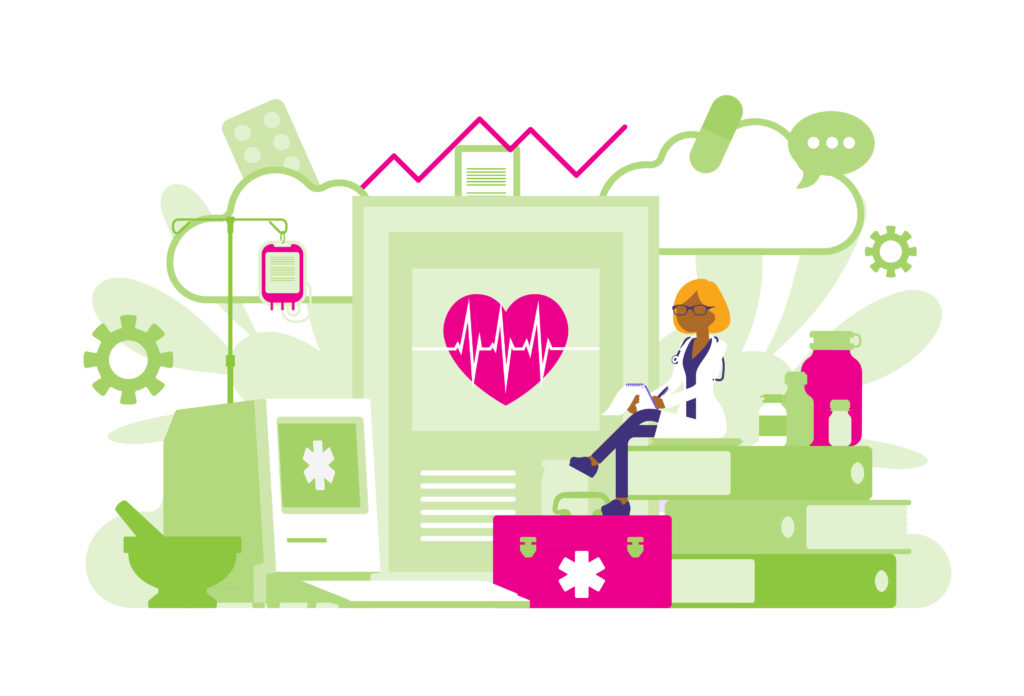
The Importance of Self-Care for Healthcare Workers
Self-care is the practice of taking an active role in protecting our own well-being, pursuing happiness, and having the ability, tools, and resources to respond to periods of stress so that they don’t result in imbalance and lead to a health crisis. Mindful healthcare and self-care for nurses, doctors, caregivers, and other healthcare professionals means asking yourself what you need throughout the day, and following through on the honest answer. Self-care can be as simple as getting to bed earlier on a work night, or as hard as taking a look at some of the habits you’ve created for yourself and their long-term effects.
4 Self-Care Habits to Practice at Work
We are our own worst critic—and it could be holding us back in the workplace. Here are four ways to stop being so hard on ourselves and use simple moments during the day to wind down when we feel overwhelmed.
Practicing self-compassion is as important as applying compassion to others. When feeling self-compassion becomes challenging, try the following approaches:
1) Use lunch as an act of self-care. When you eat, take a moment to notice this nourishment you’re giving yourself. You have the power to choose to eat something that makes you feel good. Bonus: research shows that when you make a healthy food choice, noticing the positive feelings this gives you serves to reinforce the behavior, making you more likely to choose healthy foods the next time.
2) Remember that, just like you, we all feel like frauds. When you find yourself in self-deprecation mode, calling yourself names, telling yourself that you can’t do something well enough, and generally being a bully to yourself, remember that most people suffer from this “imposter syndrome,” the feeling that we are just pretending, that we don’t really belong, that we will be found out, that our true inadequacy will become obvious to the people around us, who are, for some reason, being tricked for the time being. The fact is that everyone you work with, no matter how self-assured they seem, experiences self-doubt. This is the human condition. And these are just thoughts, so you don’t have to believe them.
3) Be a friend to yourself. When you notice you’re being hard on yourself over a problem, imagine a dear friend coming to you with the same problem. How would you respond? How would you offer support? What would you say? How would you regard your friend? Now try giving these responses to yourself.
4) Ask for help. Many of us are caught up in the idea that we need to “be a professional,” which we equate as being stoic, handling things on our own. In this mindset, we don’t think to ask for kindness or validation. In fact, we would likely refuse to accept it. Over time, though, this “I’ve got this” attitude begins to wear thin, and we realize we can’t do our jobs alone. Experiment with giving someone else the chance to support you. People like to help! Think of how you feel when you get to help others. Helping people makes us feel good about ourselves and connected to others. So, instead of defaulting to “No, thanks” or “It’s okay, I’m fine” when someone offers you something, try saying yes.
Stat Mindfulness Practice: Offering Yourself a Moment of Kindness
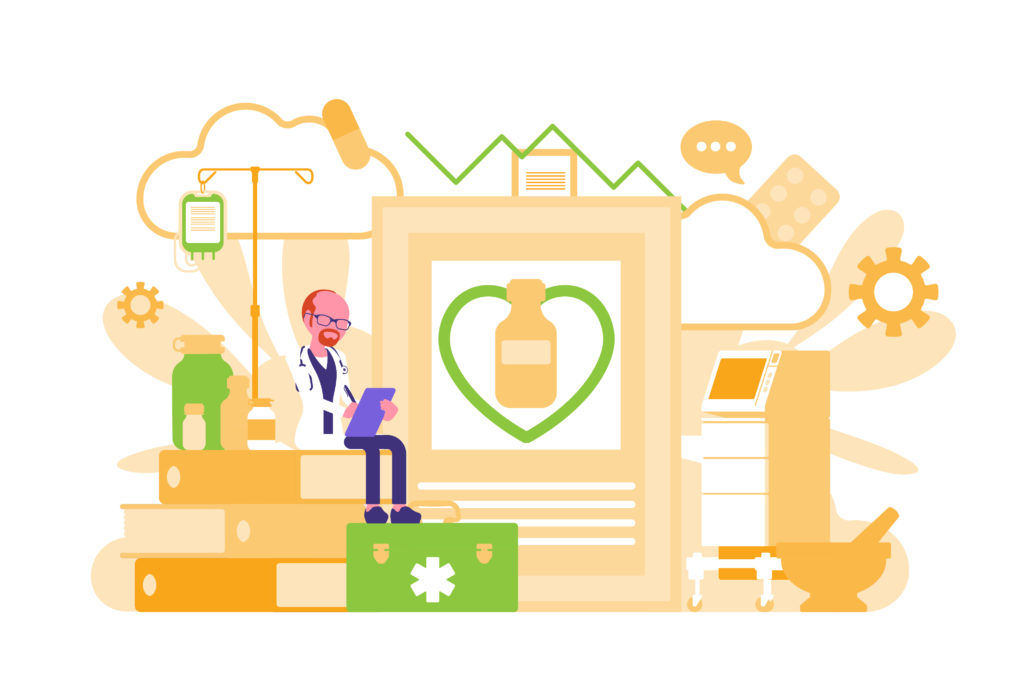
How to Create a Culture of Gratitude in Healthcare
In the past two decades, a growing body of evidence in the field of social science has found that gratitude has measurable benefits for just about every area of our lives. Taking a moment to be thankful can help you cultivate a healthy work life, manage stress and develop a deeper connection to people, especially in tough situations. The Greater Good Science Center at the University of California, Berkeley—a leader in research on the science of social and emotional well-being—describes gratitude as the “social glue” key to building and nurturing strong relationships and even commissioned a three-year project, Expanding the Science and Practice of Gratitude, to dig deeper into the health benefits behind the art of appreciation.
What are the effects of practicing gratitude?
- It boosts your mental health. Those who write letters of gratitude reported significantly better mental health four weeks and 12 weeks after their writing exercise ended. While not conclusive, this finding suggests that practicing gratitude may help train the brain to be more sensitive to the experience of gratitude down the line, and this could contribute to improved mental health over time.
- It helps you accept change. When we are comfortable with the way things already are, it can be difficult to accept when things change—let alone feel grateful for that difference. But when we make it a habit to notice the good change brings, we can become more flexible and accepting.
- It can relieve stress. The regions associated with gratitude are part of the neural networks that light up when we socialize and experience pleasure. These regions are also heavily connected to the parts of the brain that control basic emotion regulation, such as heart rate, and are associated with stress relief and thus pain reduction. Feeling grateful and recognizing help from others creates a more relaxed body state and allows the subsequent benefits of lowered stress to wash over us.
People who practice gratitude report:
- Fewer physical symptoms of illness
- More optimism
- Greater goal attainment
- Decreased anxiety and depression, among other health benefits.
Gratitude also positively impacts our brains. Practicing gratitude lights up the brain’s reward center. One study found that practicing gratitude by keeping a gratitude journal lights up the ventromedial prefrontal cortex, a key brain region associated with reward processing in the brain.
A Simple Mindful Gratitude Exercise
The more you can bring your attention to that which you feel grateful for, the more you’ll notice to feel grateful for. Researchers at Indiana University compared brain activity using an fMRI scanner in the gratitude letter-writers with those who didn’t write a letter. The letter-writers showed greater neural sensitivity in the medial prefrontal cortex, a brain area associated with learning and decision-making—and the effect persisted three months later. “Simply expressing gratitude may have lasting effects on the brain,” they concluded, noting that practicing gratitude can lead to greater sensitivity to the experience of gratitude in the future. And that bodes well for everyone.
- Start by observing. Notice the thank yous you say. Just how habitual a response is it? Is it a hasty aside, an afterthought? How are you feeling when you express thanks in small transactions? Stressed, uptight, a little absent-minded? Do a quick scan of your body—are you already physically moving on to your next interaction?
- Pick one interaction a day. When your instinct to say “thanks” arises, stop for a moment and take note. Can you name what you feel grateful for, even beyond the gesture that’s been extended? Then say thank you.
Creating a Culture of Mindfulness in Healthcare
How can you create a more mindful culture in your organization? Mindfulness and leadership experts Kip Hollister and Nate Klemp, PhD explore how various approaches (including gratitude) work to build mindful culture in healthcare.
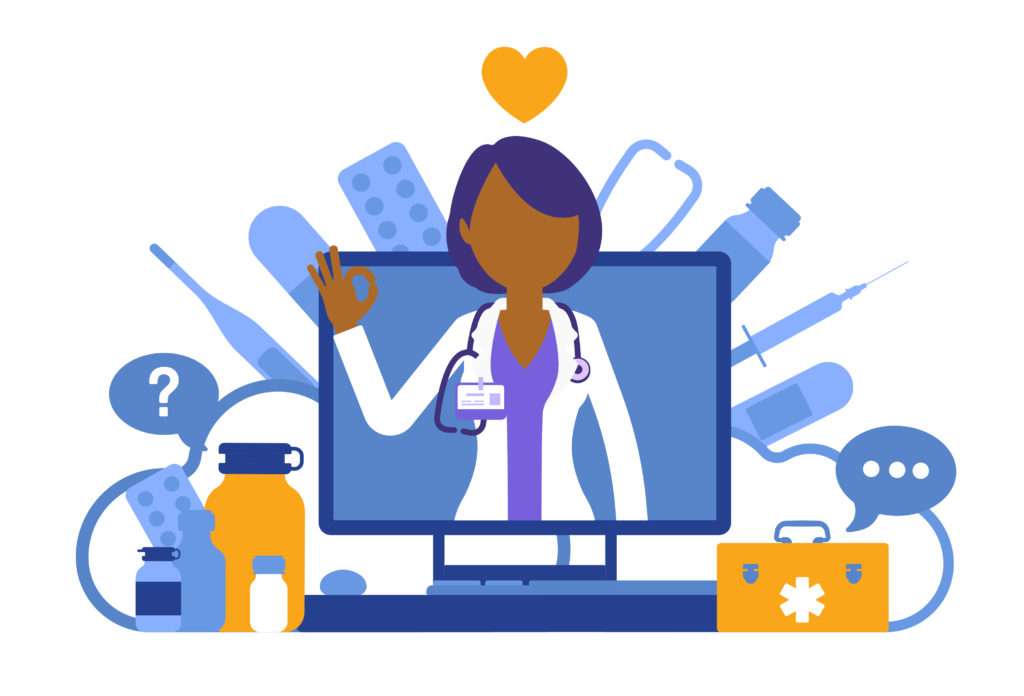
Equity in Healthcare
Identity—and who we see ourselves to be—is so subjective and influenced by our families, who we socialize with, our cultures, values, and experiences. Identity in itself is not necessarily bad but rather gripping it too tightly can narrow our experiences and keep us from acting with compassion for others. When we think “different” means “better” or even “worse,” we can unconsciously create an “us and them” scenario. That kind of dichotomy of thinking can set the stage for oppression and health inequity (internalized or externalized), which is defined as the subjecting of others to unjust treatment or control.
Mindfulness can help us to be more compassionate to others—it can bridge the gaps between us in ways that connect us all and our shared humanity. This is particularly useful when we begin to engage in discussions around diversity, racism, or inequality, regardless of whichever side of the oppressive fence we are on. As we come face to face with our ignorance, our suffering, and the roles we can play in reinforcing prejudice or inequity within systems like healthcare, mindfulness can hold kind space in order to navigate those moments with skill.
Mindful Anti-Racism: Healing Healers and Health Disparities
Award-winning pulmonologist and mindfulness teacher, Dr. Ni-Cheng Liang shares her insights treating patients from the frontline of COVID-19. This pandemic has been a magnifying glass for health disparities, and highlights the suffering faced by persons from marginalized groups who are both healers and patients. This will be a raw discussion of Dr. Liang’s lived experience on Anti-Asian racism, that delves further into the wounds of systemic oppression as it relates to healthcare and how we can start to become mindfully anti-racist to start the healing process.
A Mindfulness Practice to Bring Awareness to Our Racial Identity
Rhonda Magee offers an opportunity to feel and reflect on the thoughts, emotions, and sensations that you carry when you encounter the aspect of your being and identity within yourself as you engage with your own racial identity, and the way others may identify you through the lens of race.
- Settle in with a beginner’s mind. Let’s start by bringing our attention to our intention, to settle in, in this moment, into a posture for meditation that can support us in deepening our ability to be with this aspect of our lives on the journey today. As you identify a posture for you, whether seated, or standing, or lying down, really see if you can begin to feel the sense of your belonging on the planet, on this earth right here, right now. Feel the invitation to explore this meditation as an offering for you. Whatever your background is, this meditation is for you, and only for you. Invite a beginner’s mind and openness to the practice, just see what there is to see, and know a little bit more about your experience around racial identity at this time.
- Further drop into this moment by taking a few deeper than usual breaths, and then really feeling the support of the ground beneath you in this moment. Noticing the points of contact between the body and the chair if you’re seated in the chair, or the floor, if you’re seated on the floor, or the bed, if you’re there—wherever you are, feeling the points of contact between the body and ultimately the earth. Allowing yourself to feel the pull of gravity on the body as you sit. Experience your belonging in this moment, breathing in, and out.
- What race identity do you carry? Identify a part of the body that you can bring your visual attention to. For this practice, the invitation is to really take a look at your skin and bring mindfulness to that aspect of your embodied self. If you prefer to keep your eyes closed you can just call to mind the image you carry of your skin, embodiment and the way your body has been racialized—that is identified by, and through the language, practices, and ideas of race. What race identity do you carry?
- As you breathe in and out, reflect on the thought, and the particular words associated with your racial identity, the sensations in the body, the emotions that may come up as you think about this aspect of your identity. Imagine how it is that you might be perceived by others who don’t know you through the lens of this identity. Perhaps a story is coming up, a sensation, a feeling in the body—so bring kindness to your experience as you reflect on this part of what you know, about how race is a factor of your experience.
- Imagine how it is that this aspect of your experience may have impacted your engagements with others—how others may perceive you through the lens of what they may take to be your race. Again, noticing the emotions, thoughts, sensations in the body as you reflect on this point of inquiry. How has your racial identity been a factor in your interactions with others? How are you met by others? What kinds of predictions do you carry about how others might meet you? Breathing in and out, bring kindness and compassion to this inquiry.
- I want us to invite reflection on the fact that these identities that we carry are associated with categories, so that we have received information about not only ourselves, but the members of that category—the group by which our racial identity is associated. The invitation is to think about what stories, teachings, and what you’ve been taught to think about people. Maybe imagine one story, or image that comes to mind, and just take that in for now. Breathing in, and breathing out again.
- Invite compassion in. I’ve got one hand over my heart because for me, bringing attention to some of the stories I carry about Black, racialized people is quite painful in some ways and at the same time there’s some joy that I can imagine. If there’s any way in which this meditation is causing any difficulty, the invitation would be to place one hand over the heart, or otherwise consciously invite compassion in as a support for you. Breathing in, and breathing out again. If you’re feeling a strong emotional response, really be your own best guide, allowing yourself to settle. Perhaps placing the hands on the knees, or some other part of the body, and feeling grounded in this moment. Really feeling the sensations of the feet on the floor, if you’re seated in that position. Breathing in and breathing out, and bringing extra support for just releasing the image, the thoughts, stories around race, and coming back home to being supported and grounded, safe, connected, and resourced in this moment. Bring compassion—the will to alleviate your own suffering and difficulty as you explore how race has impacted your own life.
- Transition out. Now as we prepare to transition out of this period of formal reflection on the racial identity that you carry, and the thoughts and emotions, sensations, stories that travel in your being when you think about that identity, I would like you to make an intention to journal just for a few minutes about what has come up for you in this meditation. As we transition out of the formal practice here, breathing in and out, see what word, phrase, image, story, or emotions you will highlight for bringing into a period of journaling to reflect on what arose here, and to see what more you might know. Bringing kindness and compassion all along the way as you reflect on bringing awareness to what you carry around your racial identity and your experiences as a racialized body in the social world.
Stat Mindfulness Practice: “Just Like Me” Compassion Exercise
Mindfulness Resources for Healthcare Workers
1) The Center for Mindfulness, The Sanford Institute for Empathy and Compassion, and Compassion Institute
The UCSD Center for Mindfulness, The Sanford Institute, and the Compassion Institute are working together to provide daily streams and recordings of mindfulness and compassion sessions to provide resources and online support to those affected. Visit their Mindfulness and Compassion Resource page.
2) The Mindful Healthcare Collective
Mindful Healthcare Collective is a group of women physicians who are healthcare professional wellness experts. They are providing free online interactive and experiential Zoom sessions for debrief and mindfulness/compassion meditation offerings. Here’s an Awareness of Breath Practice from Dr. Ni-Cheng Liang, Executive Director of Pulmonary Integrative Medicine at Coastal Pulmonary Associates, Assistant Professor of Medicine at the University of California San Diego School of Medicine, and Advisor to the UCSD Center of Mindfulness.
3) Mindfulness for Healthcare Summit
Join Mindful February 8-10, 2022 for the Healing Healthcare Summit. This free four-day summit explores how mindfulness and compassion practices support high-quality patient care and the well-being of healthcare workers. Over the coming weeks, we’ll share exciting updates about summit programming and the healthcare industry leaders and mindfulness experts who will join us. Visit the registration page for summit updates.
4) VitalTalk
VitalTalk is a nonprofit comprised of clinicians who empower clinicians to communicate about serious illnesses empathetically and effectively, enabling them to feel less burned out in the process. They’ve put together a COVID Communications Playbook to help healthcare workers handle difficult conversations that we never expected—or wanted—to have.
5) Greater Good Science Center
Greater Good Science Center produces a variety of resources and programs to help health professionals apply GGSC’s “science of a meaningful life” research to their vital work. These resources not only support the mental and physical health of their patients, clients, and colleagues; they also support their own well-being, helping them care for themselves so they can better care for others.
read more
A Guide to Practicing Self-Care with Mindfulness
Making sure our own needs are met is as important as taking care of those we love most. When turning your attention toward yourself feels challenging, there are simple ways to move through the discomfort. Explore our new guide for tips, practices, and reminders on how to engage in self-care. Read More
How to Change Your Habits with Mindfulness
Learn about the mechanics of habit formation and observe them at work in your mind and body. By bringing awareness, and injecting curiosity and kindness into the process, you’ll be able to reevaluate and change your habits. Read More
How to Start Your Day with Meditation
Reclaim the first few moments of your day by dedicating some time to morning meditation or an empowering routine. To help you get started, we’ve gathered our best tips on how to ease your mind and body into a new day. Read More
